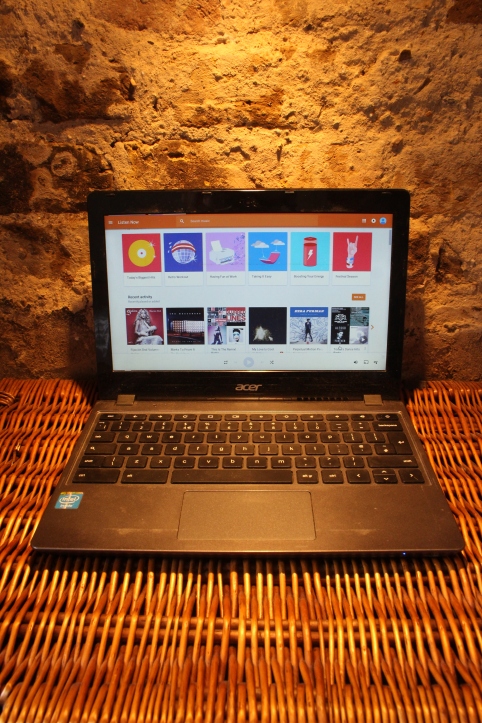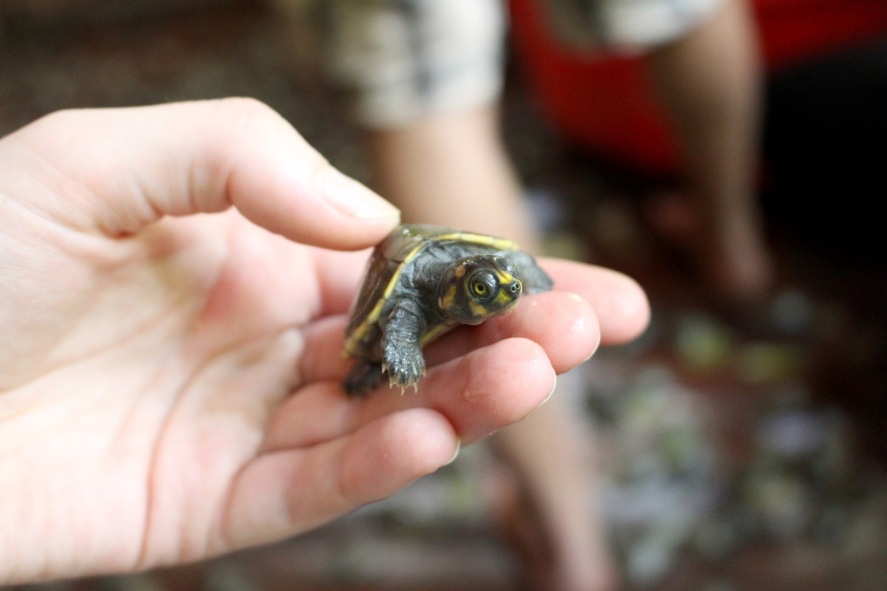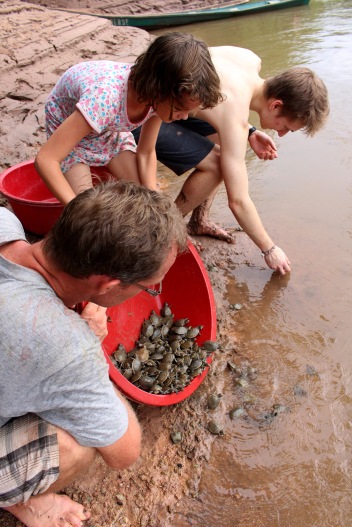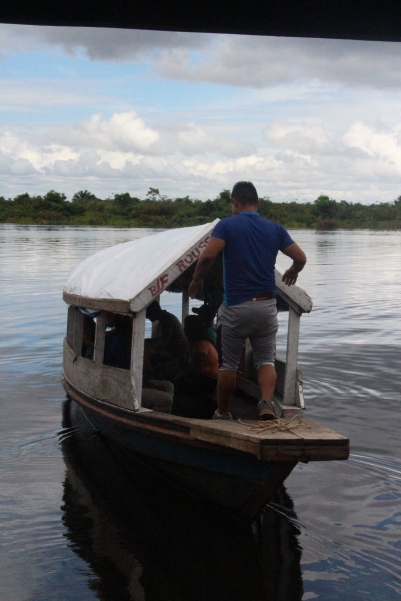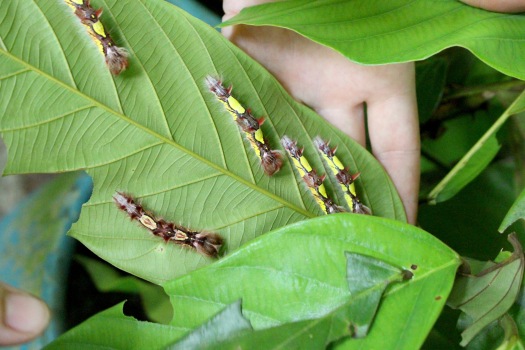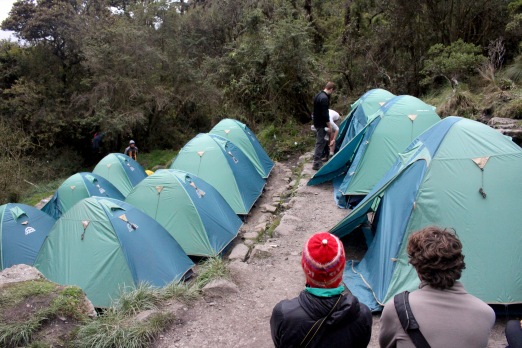One of the questions we’ve found a lot of people asking before they go on a trip is “what’s the best way to take money abroad?” For a trip in South America ATMs are plentiful, except for a few, more remote places, so we’d advise using a debit card. Hopefully in this blog we can provide some useful advice as to why, based on our experiences.
Worried about taking a card abroad
A prepaid cash card is an alternative that some travellers use to access their money abroad. Whilst they can be a useful backup we’d advise against them as your main access to money for a few reasons.
- There are often quite a few fees involved in using a prepaid card abroad. Yes debit cards have them to, but they can be the same or lower than prepaid cards.
- They can’t always be used for all types of transaction.
- They have to be reloaded with money when you run out, which may not be as straight forward or cheap as it seems at first. Some cards can take up to five days to move the money around and charge you a percentage fee.
- They come loaded either with your home currency, US Dollars or another currency that your provider offers. This means that you can suffer from bad exchange rates, especially if you’re travelling through multiple countries.

Before you leave
There are several important things you should do before you leave your home country.
- Work out which debit card has the lowest fees abroad
- Get some US Dollars (USD)
- Get some of the local currency of the first country you’ll be visiting. Or even each one you plan on visiting.
- Tell your bank you’re going abroad and let them know which countries.
- Make sure you have a reserve way of accessing money, another debit, credit or prepaid cash card.
Where to get the foreign currencies
Use the internet to look up the best foreign currency exchange office in your local area. If Google can’t help you out, ask some friends or go on a message board. We’ve found it’s often easier to get some foreign currency before you head abroad. It’ll also give you peace of mind that you’re not at some dodgy street vendor’s mercy. For people heading through London we’d definitely recommend Thomas Exchange Global on the Strand. You can order the money online through their website and it’ll be there when you turn up. They offer excellent exchange rates on commonly used currencies and pretty good rates on the more obscure ones.
Debit Cards
If you’re going to take a debit card (we suggest you do) then head on over to London and set up an account with Metrobank. When we first opened our accounts with them they offered free withdrawals abroad. They do now charge £1 per ATM withdrawal or transaction (outside of Europe). This is still far lower than any of the other UK banks, and there aren’t any confusing percentage fees that keep adding up either. For example Lloyds charge an additional 1.5-2.99% non-sterling transaction fee on top of a flat fee, so on one of my transactions i was charged a total of £7.89 on a £150 transaction. Nearly £8 versus £1 is a no brainer really… Of course if you’re not based in the UK, Google the best cards for travel in your country.

Why USD
You should always have some USD on you. As the worlds base trading currency its easy to exchange pretty much anywhere in the world with good rates. After the USD then the Euro is probably the second best to have on you. Not only is the USD easy to exchange but in lots of countries, especially in tourist hotspots you can usually pay for a lot of things just with it without having to exchange to the local currency first. If you run out then many countries, especially in South America allow you to withdraw USD straight from ATM’s. As a rule your USD will be more useful in poorer countries or those experiencing economic instability.
ATM’s abroad
Withdrawing cash from ATM’s abroad isn’t of course as straight forward as in your home country and they react differently to different cards, so offering advice on which banks to use in various countries may not of course be helpful. The best thing to do is ask other travellers and use various machines until you work out which one is the best for your cards. Things to take into account are whether the ATM is going to add an additional fee on top of the one you’re already paying your bank and the maximum it’ll let you withdraw. There’s no point in saving a small amount of money on one withdrawal if you have to make three withdrawals instead of one from a different bank.
Let your bank know.
We’ve found a lot of people actually argued against this as they informed their bank they were heading abroad, only to find their cards blocked anyway. This is of course a worst case scenario which is why you should always have some local currency on you. With Metro Bank we have never experienced any problems with using it in over 20 countries. When you ring them up let them know your dates of travel (you can leave it open ended) and which countries you’re likely to be visiting. Lloyds did stop one of my transactions but sent me a text which would allow me to use the card unrestricted in that country if i replied by text. Annoying but i can’t complain too much for them being cautious and it only delayed me by 5 minutes.
Using your debit/credit card for payments.
We’ve only paid with card a couple of times as often there are hefty percentage costs for paying with your card abroad. It’s also worth remembering that some places only accept Visa or Mastercard, not both. If you set up a MetroBank account you’ll receive a Mastercard Debit card. Occasionally this can cause a headache as most people are only used to seeing a Mastercard Credit card and will try and charge you a higher credit card transaction rate. Just let them know it’s debit.

What if my card gets cloned or stolen.
This a worry to everyone, and worse when you consider you could be thousands of miles from home. As long as you’re always safety conscious and keep your main card and your backup separate then the worst this should be is a headache without stranding you abroad. Card cloning is probably a bigger problem is your home country than in South America. In the UK we’re used to ATM’s dotted outside all along the high street. In South America you’re more likely to find them inside a bank with a couple of security guards in constant attendance. This makes it much more difficult for crooks to set up a system to copy your card.
Some country advice

Peru
We’ve found that Peruvian ATM’s don’t seem to charge for withdrawals as a rule. The maximum we can withdraw at one time in 700 PEN, equivalent to £150 GBP. ATM’s are usually found inside banks, if the bank is closed there will be a door accessed by scanning your card through a reader. If you’re worried about doing this, just wait for someone else to open the door on the way out. USD are easily exchanged, can be withdrawn from ATM’s and can be used to pay for tours and transportation such as planes and intercity busses.
Chile
Chilean ATM’s did charge us for withdrawals as a rule, but did allow us to take out fairly large amounts in one go. The USD isn’t as accepted as readily as elsewhere in South America due to the strength of Chile’s economy. In especially touristy spots such as San Pedro de Atacama or Torres del Paine national park USD can be used to pay for most tours and activities, just ask.
Bolivia
Some Bolivian ATM’s charged us but not all, other nationalities had different experiences. Your money will go a long way in Bolivia so you won’t be making lots of withdrawals. If you have a lot of USD then chances are you’ll never have to go near an ATM anyway, just exchange it for Bolivianos. Some places actually prefer you to pay in USD but be aware that the exchange rates can be pretty bad.
Argentina
At the time of writing Argentina has been experiencing a period of economic unrest. As such they have introduced numerous sanctions to try and stabilise their economy. These are aimed at their own citizens but affect tourists just as much. If you’re really interested there are lots of economics articles that will explain it much better than i can. The point is you can’t withdraw much in one go from ATM’s and it’ll probably cost you a fair bit. Don’t be worried though as there is a black market for USD as Argentineans try and ride out the crisis. The Blue Dollar rate will save you 30% or more on your trip to Argentina. Take as many USD as you are comfortable taking and exchange them for the much better Blue Dollar rate on the street. If you run out of USD, pop into Chile or Uruguay to withdraw more. Be aware that the Blue Dollar trade is illegal but exists in a grey zone. As long as the police don’t physically see you exchanging the money they don’t care. They want dollars over pesos as much as anyone else.
Uruguay
We didn’t spend much time in Uruguay, only visiting Colonia. However the shops and cafes there allowed us to pay in USD, Euro, Argentine pesos as well as the local currency. We only tried one ATM and it did charge us quite a bit, but this may not be the rule.
Paraguay
Again we only visited Paraguay briefly. From what we understand the USD is easily accepted. We weren’t charged for our ATM withdrawal and we could withdraw USD. As with Bolivia your money will go a long way. We withdrew £40 for our day in Paraguay, we still had over £30 at the end of the day.
Brazil
Brazil gave us the most hassle when it came to withdrawals. Some ATM’s won’t allow you to withdraw cash. I don’t mean some banks i mean some specific machines. The best thing to do is to try every machine in each bank you visit, when you find one that works remember which one it was. Santander didn’t charge us for withdrawals. The USD is best exchanged into the local currency in cities but tours in more touristy areas can be paid for with it.
Colombia
You can usually withdraw between 300,000 and 600,000 COP in one go from an ATM (£75-£150) BancoColombia ATM’s were really easy to use and didn’t charge us any additional fees. They also allowed us to withdraw the upper amount of 600,000 COP. The ATM’s are nearly always inside a bank or a lobby for use after hours. These lobbies always have excellent air conditioning, great for cooling off when you’re out and about!








